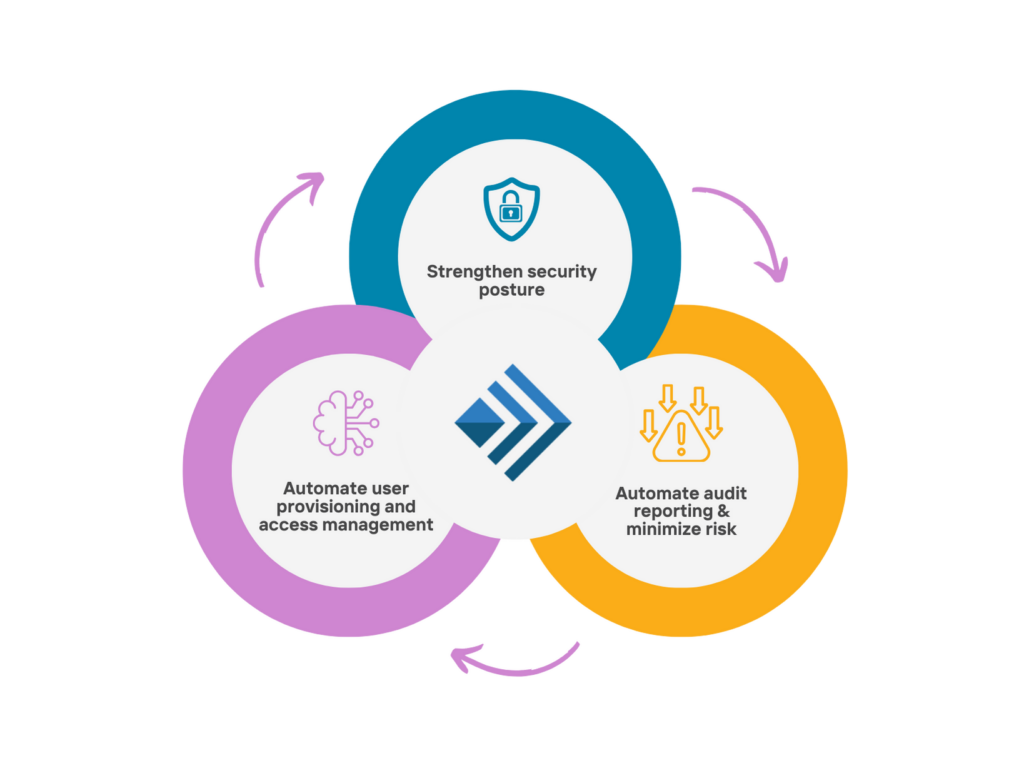
A car is taken to the auto shop for one of two reasons. Either to prevent an issue or to fix an issue. The bill is always higher to correct a smashed hood than it would have been to check the brakes. In the same way, proactive cybersecurity is preferred to picking up the pieces of a data breach. Would you rather invest in a robust cybersecurity strategy and platform now or pay $4.5 million plus the loss to reputation later?
IAM (identity and access management) maturity requires an enterprise to adopt proactive measures to identify, assess, and mitigate the security risks associated with identity and access management. Implement a future-proof cybersecurity policy, equip it with fortified authentication architecture, and automate those systems. Do this, and any enterprise of any size will be ready to meet whatever security challenges come its way.
Institute Proactive Cybersecurity Policies
The first step to strengthening security is implementing policy changes to make your data less vulnerable. Role-Based Access Control (RBAC) and the Principle of Least Privilege (PoLP) are the most pertinent methods.
RBAC assigns access based on roles within the enterprise. PoLP limits access to only what is necessary for an individual to perform their role. These policies reduce potential attacks by strictly controlling access to sensitive data and resources. However, policies alone aren’t enough. Consider the human factor—vulnerabilities can be intentional or accidental. This is why fostering identity awareness among employees and defending against insider threats are also essential.
However, this is lessening the chance of an opening, not stopping it altogether. To achieve proactive cybersecurity, you need to remove the means for a breach to happen. You must build identity platform from the ground-up to fulfill this objective. A provisional solution, implemented to get an enterprise off the ground, does not suffice. By overhauling your cybersecurity via an expert digital transformation, you can put a perimeter around each identity in your systems. Bear in mind that, while your policy should mirror industry best practices, your identity solution must be tailored to your specific needs.
Fortify Your Authentication Architecture
You must enforce your security policies via the systems themselves and nor rely upon employees to stay safe 100% of the time. As previously stated, these bespoke identity systems must be designed from the ground up to be effective. Without specific planning, your IAM solution will be either easy to use or secure, but not both. But with the right setup, your identity solution overcomes the compromise between security and efficiency.
This priority focuses on fortifying the systems, processes, and controls related to identity and access management. It includes implementing robust authentication mechanisms such as adaptive multi-factor authentication and biometric verification. By requiring multiple points of proof, attacks on specific users are more difficult if not impossible.
You can also ease the friction of these verification steps by adding SSO to your systems. This reduces the number of redundant logins and makes users less likely to break protocol. Of course, both of these helpful features require a powerful Privileged Access Management (PAM) solution to function properly. Without a suitably strong PAM, your remediation efforts are wholly inadequate against modern cyber threats. A number of major breach events could have been prevented if the targeted companies had better PAM solutions. PAM also fulfills several critical cybersecurity compliances including NERC CIP, GDPR, and PCI DSS.
Automate your Proactive Cybersecurity Systems
Medium to large businesses always feel the ever-increasing burden of identity management. Consequentially, critical cybersecurity systems must intelligently implement automation to keep pace. By continuously monitoring, detecting, and responding to security incidents, organizations strengthen their proactive security posture and effectively protect against evolving cyber threats. In fact, using automated security is the only way your enterprise can reliably answer the all-important 6 identity and access security questions.
By automating your enforcement of RBAC and PoLP, your systems do the lion’s share of the heavy lifting for you. Automation has the potential to cut down the cost and time of employee and application onboarding. Additionally, when unified into a comprehensive identity platform, your cybersecurity platform can consolidate its expenses into a single expenditure. Modern identity-centric security places a perimeter around each individual identity instead of around your data stores. This is especially important in detecting insider threats and third-party vectors.
Automating enables instant reactivity in your authentication protocols. By linking users’ metadata (geolocation, usage habits, etc) with their credentials, the system knows when to escalate verification requirements. Once the overarching apparatus of the solution is in place, maintaining it is easy. Whether you need to scale up your user volume or install the stream of updates to multiple applications, you’ll be able to do it easily thanks to future proofing.
Incorporating Security Concepts into your System
While easy to outline, implementation can be challenging across an existing identity fabric, especially if relying solely on an already overburdened IT team. Instead, enlist a team of identity-focused experts to get it right from the start. They can identify your needs and roll out a solution adaptable to evolving threats and future demands.
Talk to a Simeio advisor now and learn what optimal cybersecurity looks like for your organization.

